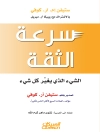Successful hedge fund investing begins with well-informed
strategy
A Guide to Starting Your Hedge Fund is a practical,
definitive ‘how-to’ guide, designed to help managers design and
launch their own funds, and to help investors select and diligence
new funds. The first book to examine the practical aspects of
setting up and operating funds with a focus on energy commodity
markets, this book scrutinises the due diligence process and
comprehensively reviews the opportunities and risks of all energy
commodity markets as hedge fund investments. Extensive planning and
strategy advice prove invaluable to prospective fund managers and
investors alike, and detailed discussion of the markets’
constraints help inform procedural decisions. Readers gain insight
into practical matters including legal and commercial structures,
due diligence, fund raising, operations, and more, allowing them to
construct a concrete investment plan before ever touching a
penny.
Asset managers are looking to energy commodities to provide
attractive uncorrelated – if volatile – returns. These
high returns, however, are accompanied by high risk. Few investors
have experience evaluating these investment opportunities, and few
prospective fund managers understand the market fundamentals and
their associated risks. This book provides the answers sorely
lacking in hedge fund literature, giving investors and fund
managers the background they need to make smarter decisions.
* Understand the markets’ structures, opportunities, and
risks
* Develop a comprehensive, well-informed investment strategy
* Conduct thorough due diligence with a detailed plan
* Examine the practical aspects of fund raising, legal and tax
structure, and more
Oil has long been traded by hedge funds, but electricity, the
fuels that generate electricity, and the environmental products
like emissions allowances and weather derivatives have become the
new ‘hot’ investment strategies. These high returns come with
higher risk, but A Guide to Starting Your Hedge Fund ensures
participants have essential information at their disposal.
Tabela de Conteúdo
Acknowledgements ix
Part I Why This Book? 1
Chapter 1 Introduction 3
Why This Book? 3
The Big Picture and Energy Commodities 4
Case Study: Amaranth Advisors 5
Layout 6
The Beginning 7
Bibliography 7
Part II the Basics 9
Chapter 2 What Is a Hedge Fund? 11
I Already Know What a Hedge Fund Is 11
A Little Bit of History 12
So What Is a Hedge Fund? 13
Hedge Funds (Un)Defined 16
The Growth of the Hedge Fund Industry 18
Hedge Fund + Commodities = Commodities Corporation 19
Whither Energy and Commodity Hedge Funds? 20
Moving Forward 20
Bibliography 21
Chapter 3 What Are Energy Commodities? 23
Introduction 23
What Are Energy Commodities? 23
The Regionality of Electricity 25
Why Are Energy Commodities Attractive for Investors? 27
A Complex, Solvable Problem 30
Drivers of Complexity 31
Conditions for Solvability 36
Principal Sources of Opportunity and Risk 39
Bibliography 46
Chapter 4 Trading and Investing in Energy Commodities 47
Bottom-up and Top-down 48
Trading + Managing a Business = Successful Hedge Fund 49
The Edge? 50
Trading Energy Commodities 52
Basic Financial Knowledge for Commodities 55
Conclusion 56
Bibliography 59
Part III Starting the Journey 61
Chapter 5 The Business Plan: Implications and Applications 63
Introduction 63
Objectives and Uses of a Hedge Fund Business Plan 64
Conclusion 71
Bibliography 72
Chapter 6 Laws, Contracts, and Lawyers 73
Don’t Kill Your Lawyer 73
Legal Basics for Funds 74
Master-Feeder Fund Structures 77
Side-Pocket Structures 81
The Firm 84
The Investment Advisory Agreement 86
Contents vii
Attributes and Variations of the Investment Management Enterprise 87
Structural Design Decisions 88
Case Study: Complex Tax Structuring 98
Be Nice To Your Lawyer 103
Bibliography 104
Chapter 7 Service Providers 105
Introduction 105
Long-Term Relationship: Service Providers and Marriage 106
Service Providers: Who and Where? 107
Negotiate, Negotiate, Negotiate 108
Service? 110
How to Choose? 112
Final Thoughts 113
Bibliography 113
Part IV Running the Business 115
Chapter 8 Fundraising 117
Strategic Investor Portfolio Design 118
Start-up Lifecycle Analysis and Investor Portfolio Development 127
Investor Acquisition – Marketing 130
Tools for Marketing and Key Marketing Documents 140
Marketing Documentation 143
Investor Maintenance – Investor Relations 152
Chapter 9 Operations and Infrastructure 155
Introduction 155
Infrastructure and Technology 158
Bibliography 160
Part V Final Thoughts 161
Chapter 10 Investing in Energy Commodity Hedge Funds 163
Asset Allocation: Portfolio Building Basics 163
Asset Allocation: Understanding Different Strategies 167
Checklist for Investing in Energy Commodity Hedge Funds 170
Bibliography 171
Chapter 11 Quo Vadis 173
Bibliography 179
Appendix A Sample Business Plan Outline 181
Appendix B Outline of a Confidential Explanatory Memorandum: Sample Offshore Feeder Ltd 183
Appendix C Sample Due Diligence Questionnaire Outline 189
Index 195
Sobre o autor
Erik Serrano Berntsen is CEO of Stable Asset Management. Prior to Stable, he was a Consultant with Bain & Co., where he consulted on private equity deal studies as well as a broad spectrum of corporate engagements. During his time at Bain he was also an advisor to the Prince’s Trust, including advising on the UK-wide Volunteer Strategy initiative. Erik holds a Bachelor of Arts in Politics, Philosophy and Economics from Keble College, University of Oxford, and a Masters of Business Administration with honours and a Concentration in Finance from the University of Chicago Booth School of Business.
John Thompson is Principal of Stable Asset Management. Prior to Stable, he was a senior executive of Enron Europe. He has held regulatory affairs and market operations management roles with Wintershall (BASF) and was regional financial coordinator for Milestone Petroleum (Burlington Resources). John began his energy career in the oil and gas fields of the Rocky Mountains and later as a well-site mud-logging engineer. John has held several Directorships, including Member of the Supervisory Board of the European Energy Exchange (EEX). John also holds a Masters of Business Administration from the University of Chicago Booth School of Business.
Stable Asset Management is a hedge fund seeding firm that backs top trading talent globally to build institutional quality asset management firms.












